I recently talked about time blocking and how it helps me manage my time well and focus on my priorities. But today I’m taking it a step further and sharing about creating my ideal weekly schedule.
Now the key term here is “ideal.” It’s far from exact. In fact, if I gave it to my 2-year-old I’m pretty sure he would literally tear it in half!
But it gives me a starting point, and that’s really important for me as a busy work at home mama who’s trying to live intentionally and spend my time on what matters most.
My ideal schedule helps me to remember to focus on work during naptime so I can focus more on quality time with my sweet boy while he’s awake and family time in the evenings after my husband gets home.
So here are my top 3 tips for creating an ideal weekly schedule.

Start with the non-negotiable.
Beginning with your top priorities will ensure you have time for them.
A great way to illustrate this is the story of filling your time jar with big rocks, little rocks, and sand. The big rocks are your top priorities, small rocks are your next priorities, and the sand is everything else. If you put those items in a jar in any other order, you’re not going to be able to fit your highest priorities (the big rocks).
To do this, I make sure I complete the most important tasks on my to-do list first. Though it’s tempting to do the easiest or quickest things first; starting with the most important, even if it’s hard, will make you more productive in the long run. Furthermore, if your day gets off track it’s already been a success because you got the most important things done!
Ok, now let me show you how I fill out a weekly schedule, or, “Ideal Schedule.”
I start with top priorities or something easy that has to happen like…
Meal times. You gotta eat, right?
Those are pretty consistent for us so it’s a quick, easy way to start the process.
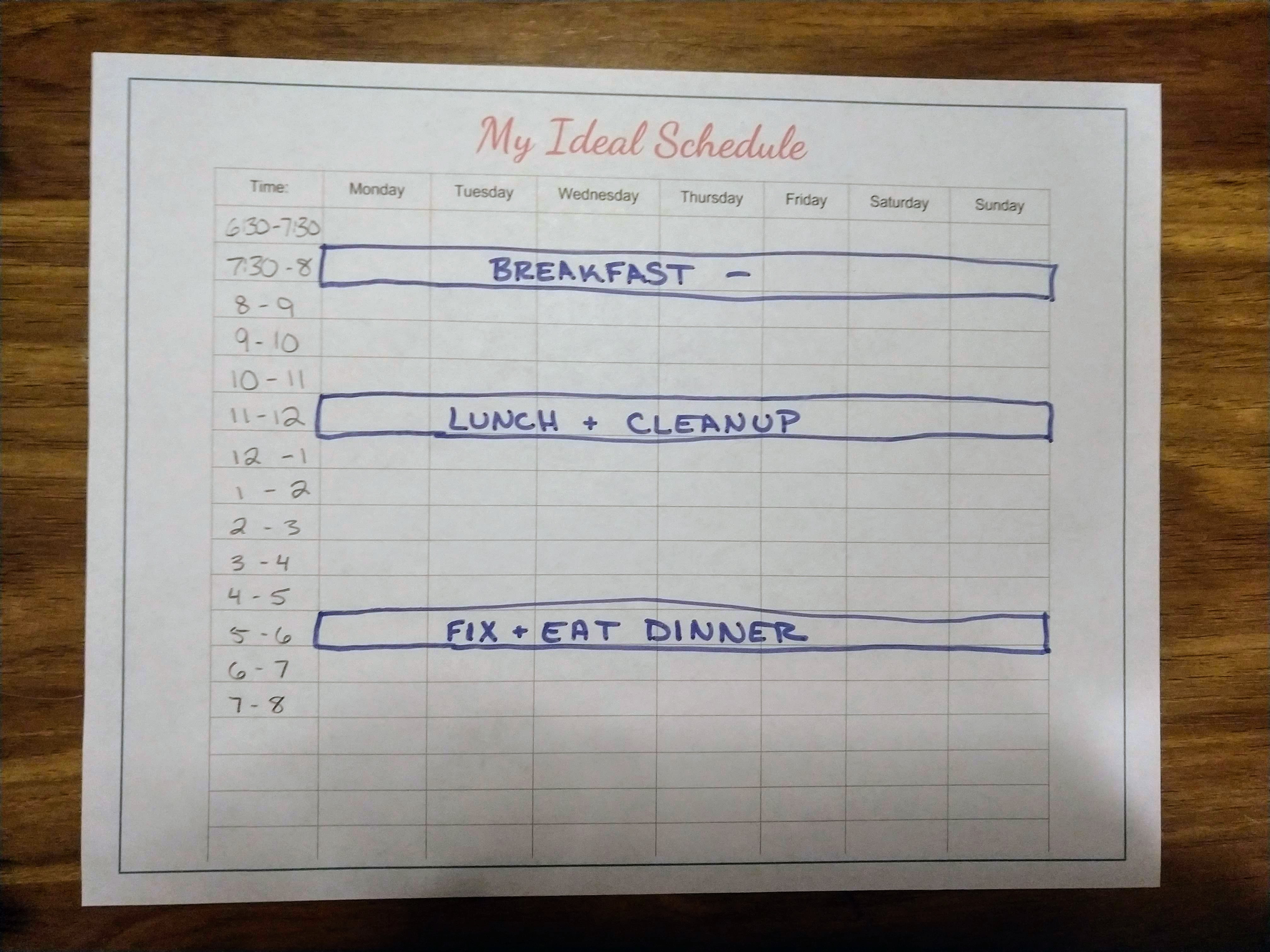
Next, I’m going to look at important appointments that I’ll need to work around. So I’ll fill in church, family dinner, and playgroup days.
A note on playgroup days, this isn’t a huge priority but it’s something we want to be involved in. So we make it whenever we’re able to.

Alright, so moving on I next need to make sure to fill in my ideal schedule template with my biggest priorities. I’m going to fill in family time, home time, and work time. I like to use different colors to categorize my blocks because I’m visual like that haha.
From there I fill in any missing pieces of my routine until I’m happy with my template. Now I have a starting structure for my days!
Here is my schedule filled out for a Tuesday, or a typical day at home.
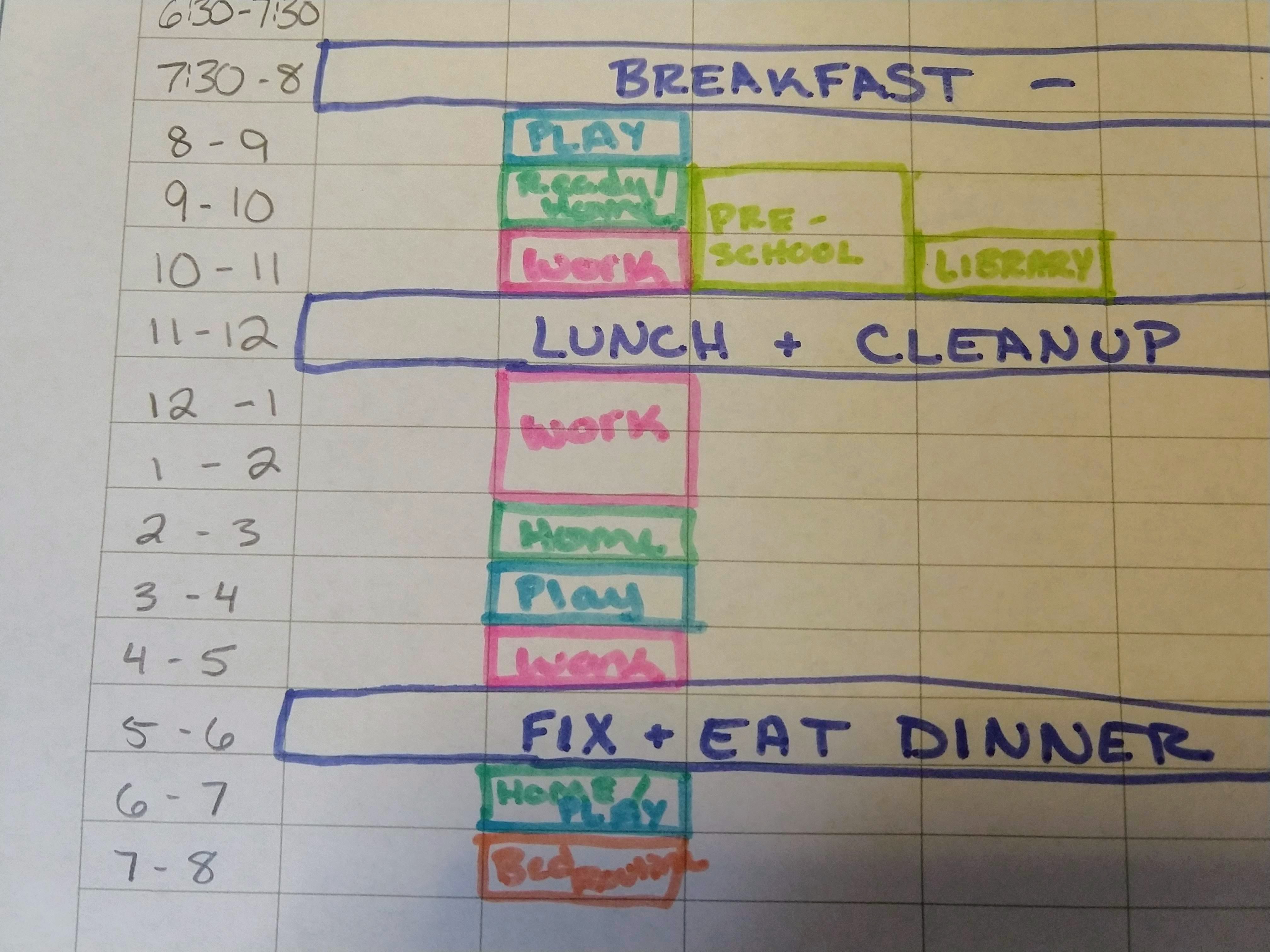
Please note, though, that this template isn’t going to last forever. Things come up. Schedules change. And you’ll find rearranging something works better for you.
When that happens, just a print a new one and fill it out with your new schedule.
(Side note: If it’s a small adjustment, you can erase and correct with these erasable markers. (affiliate link) I used these in the example above. I love that they don’t bleed through the paper and they’re easily erasable.)
And when you’re first starting out, you may need a new one every week until you find what works. That’s ok!
Keep refining until you have a structure that works well for you.
Now, let’s move on to two more important points to make your weekly schedule work.
Leave margin.
Next, be sure to give yourself room to breathe. Don’t fill up every minute – make sure there are at least a couple of hours each day that you don’t have something scheduled to ensure that you have time to rest and account for anything that takes longer than planned. Because we all experience things that take far longer than we planned!
Margin is also important to make sure you’re not burning the candle at both ends. Rest is so important – taking care of yourself first will allow you to better care for those around you.
So to create margin, I give extra time for a time block (or at least try to.)
For example, after naptime, it doesn’t take me an hour to do household chores. But I have an hour set aside in case something comes up OR I need to finish something that didn’t get done earlier in the day.
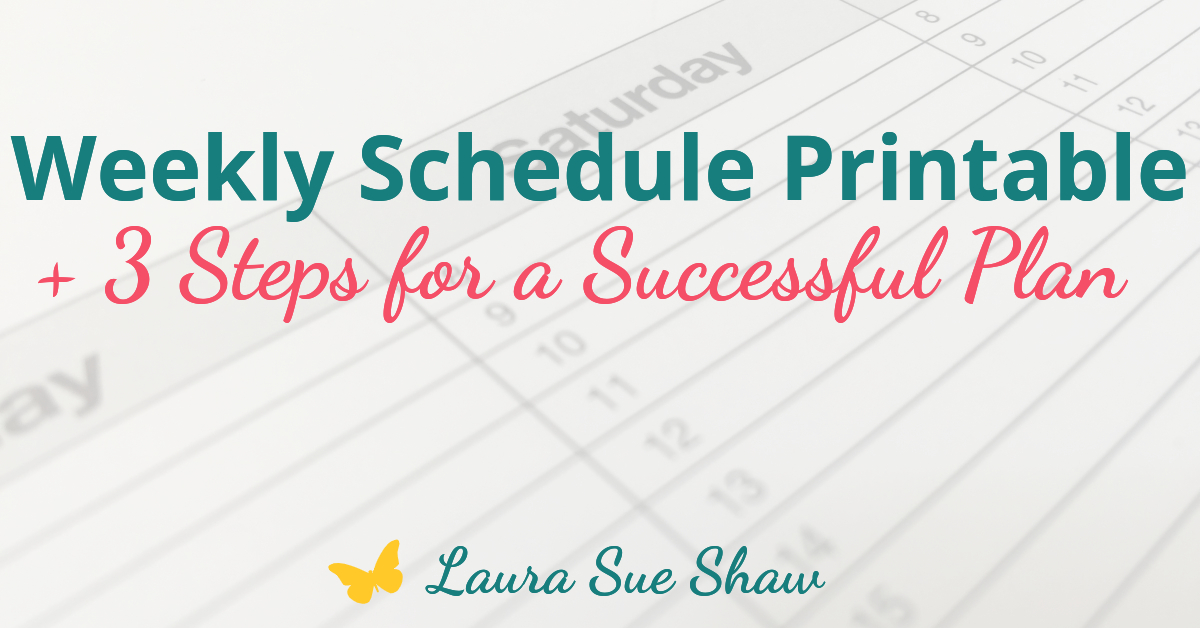
Finally, be flexible.
I think it’s important to remain flexible enough that it won’t totally throw you off when something unexpected comes up. This is much easier to do after you’ve implemented the first two tips – beginning with your top priorities and leaving plenty of margin.
Being flexible doesn’t mean not actually following your schedule – it’s simply making it so it’s easy enough to adjust when you absolutely need to.
I think it ultimately comes down to 2 things – mindset and expectations.
First of all, mindset plays an important role here of embracing that things don’t go as planned. That’s life – as much as some of us would probably like to, life isn’t something we can micromanage.
So ask yourself what thought patterns are holding you back. Are you thinking your schedule has to be perfect? (It doesn’t.)
Are you thinking you need to plan and write down every detail? (You don’t. I don’t have time for that and I’m guessing you don’t either.)
Or do you think your life is too complicated to bother creating some structure? (Some structure might just help it feel not so complicated.)
Whatever thoughts may be holding you back, I’d challenge you to dig deep to see why you feel that way and if those thoughts are truly valid.
Ok, so part 2 – expectations.
I will be the first to admit that I tend to put unrealistic expectations on myself. Things that just aren’t realistic for the season I’m in and the time I have available.
So after I make these plans, I have to slow down and really evaluate if it’s realistic for my season, my priorities, and my schedule.
I just did this for the month ahead.
I have a bunch of work projects that are a huge priority, I was going to add going through all of our clothes to my home projects this month.
Then I realized that is not setting myself up for success. My closet can go one more month without being cleaned out.
So my home projects are smaller things in the dining room and kitchen that will actually make a difference in my month.
But evaluating and adjusting my expectations helped me set myself up for a much better month.
Alright, so we’ve covered a lot here but it comes down to these top 3 things to create a weekly schedule that works for you – begin with your top priorities, leave plenty of margin, and be flexible (by adjusting your mindset and expectations.)
Are you ready to create your weekly schedule?
[convertkit form=967396]
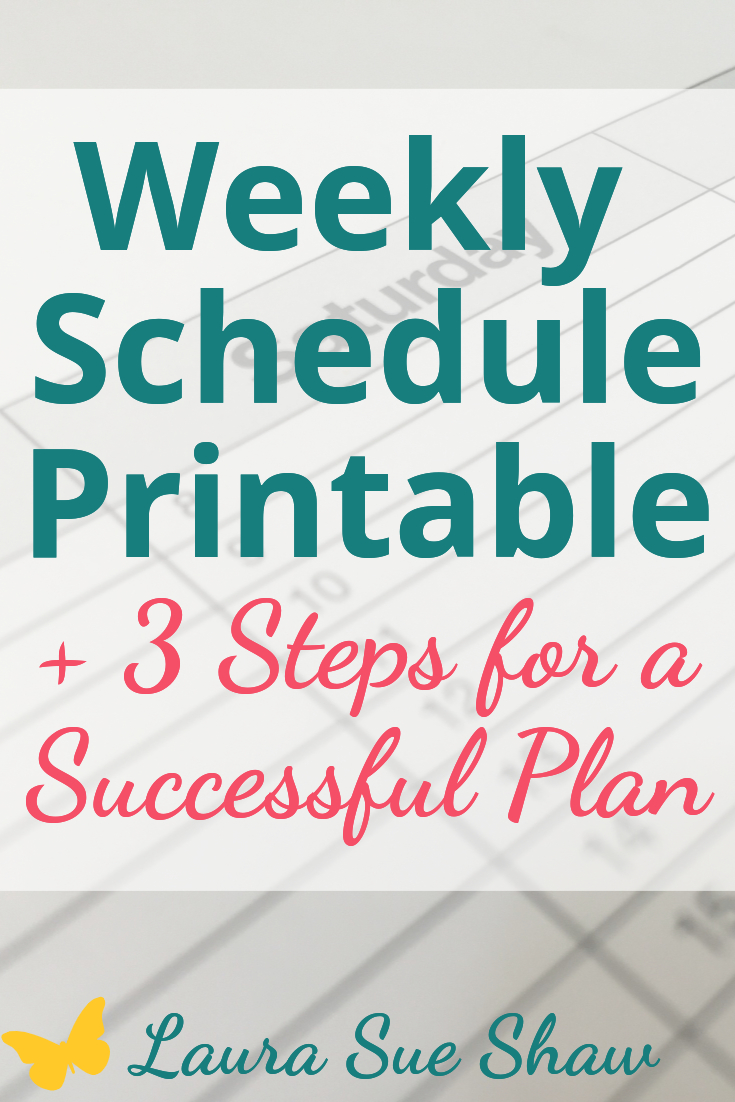
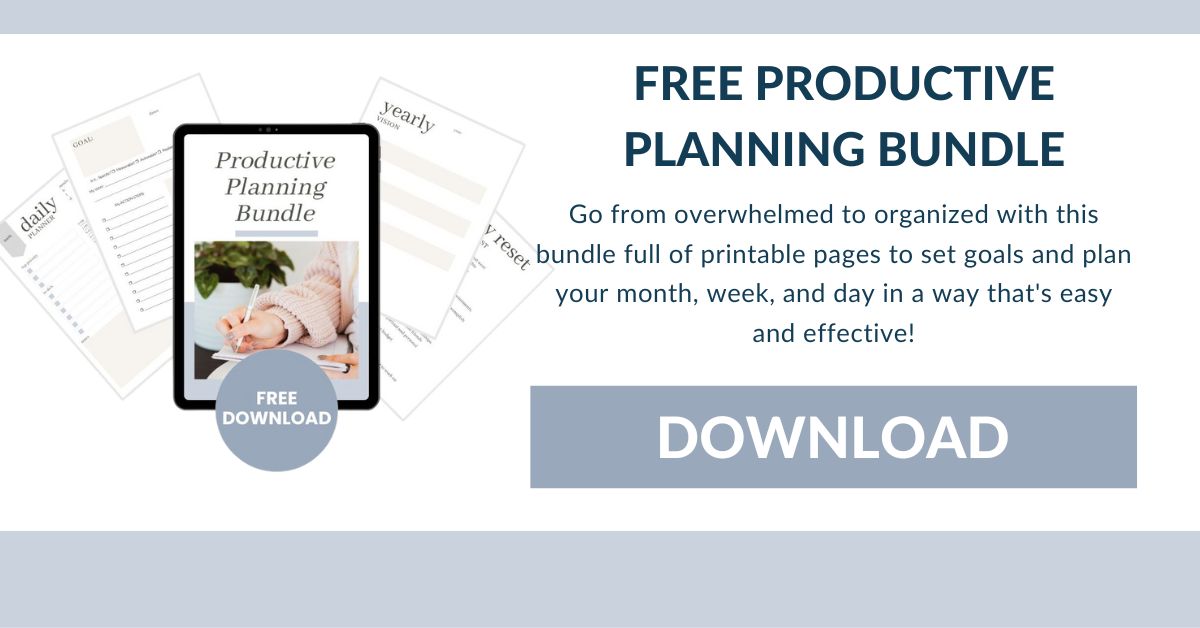


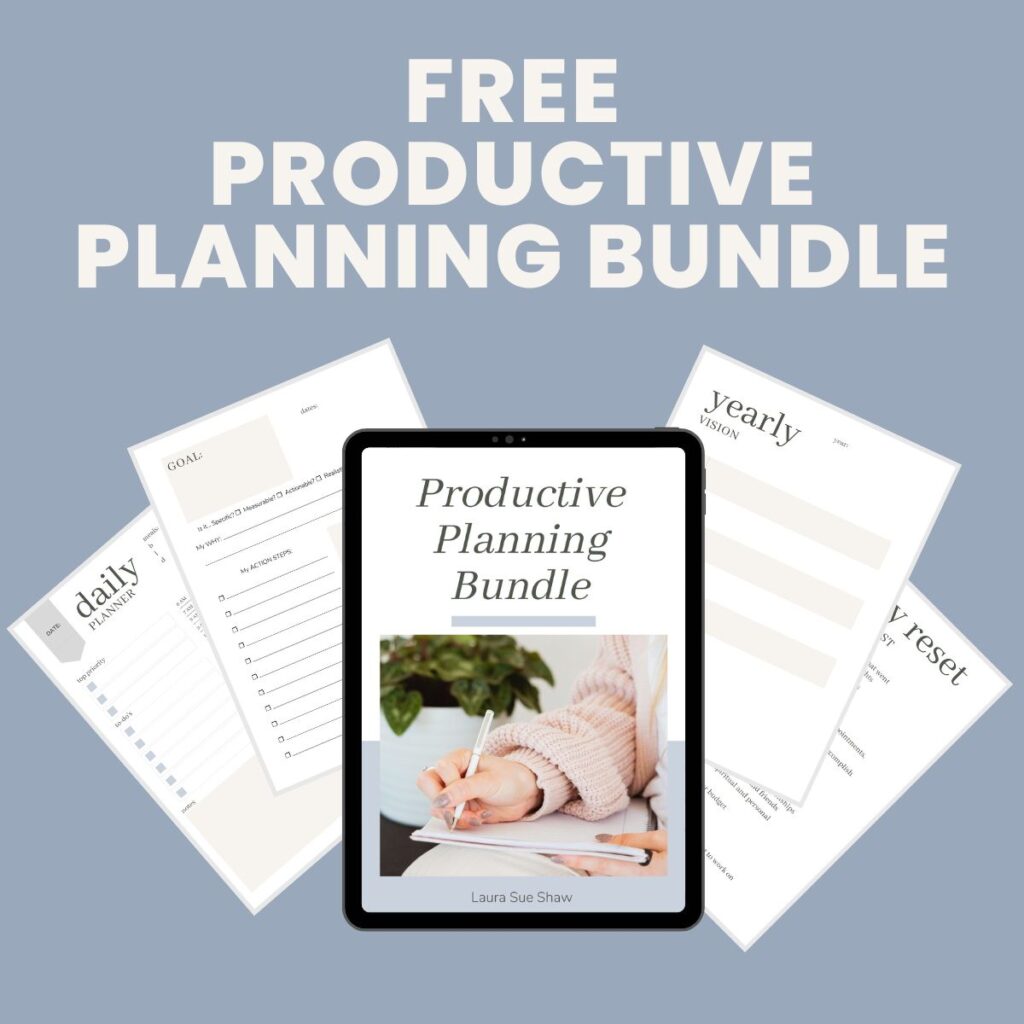
Trackbacks/Pingbacks